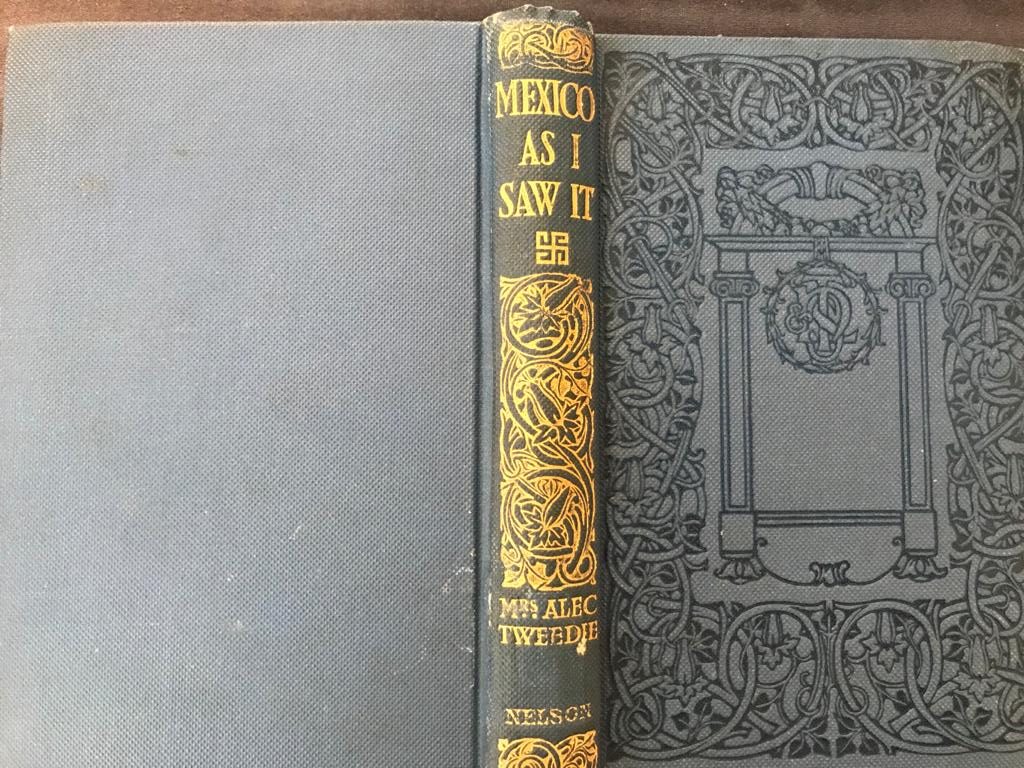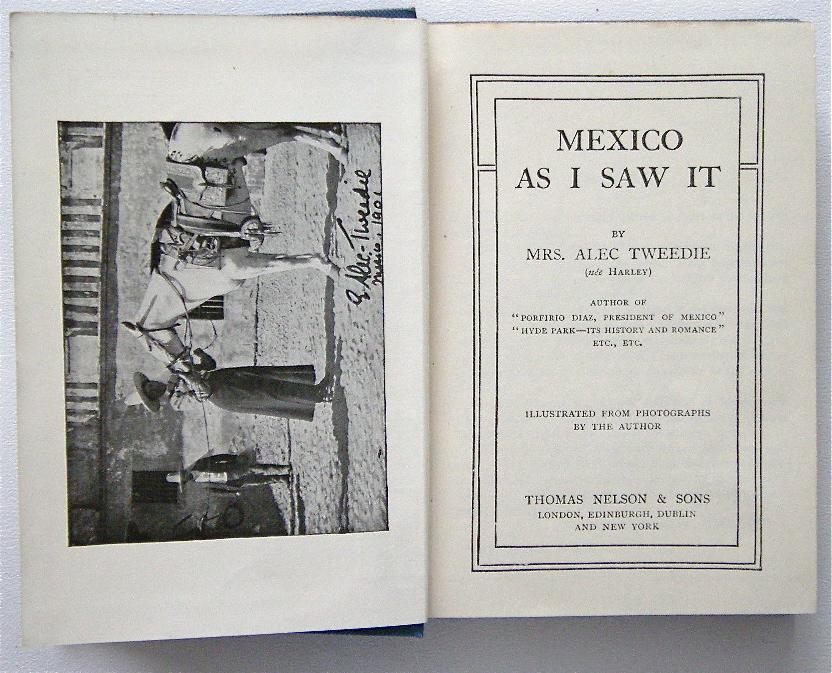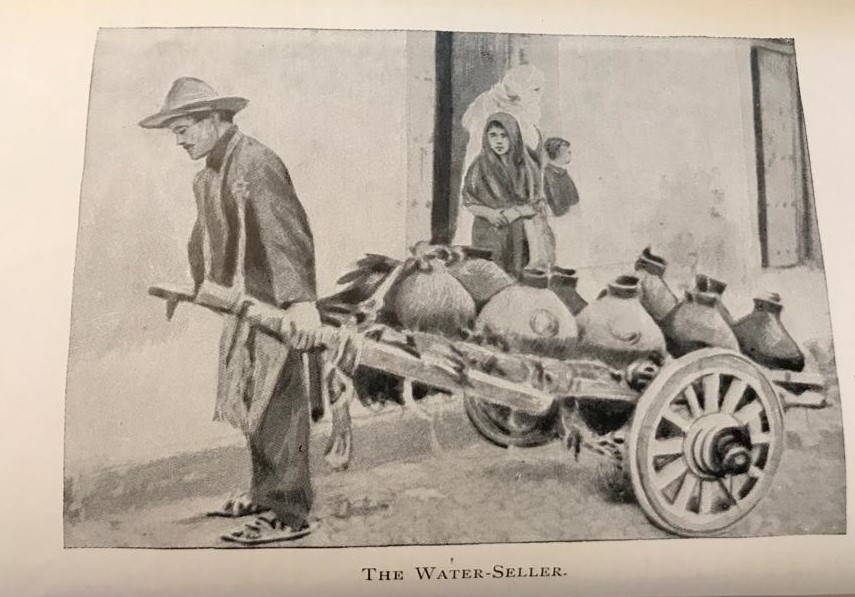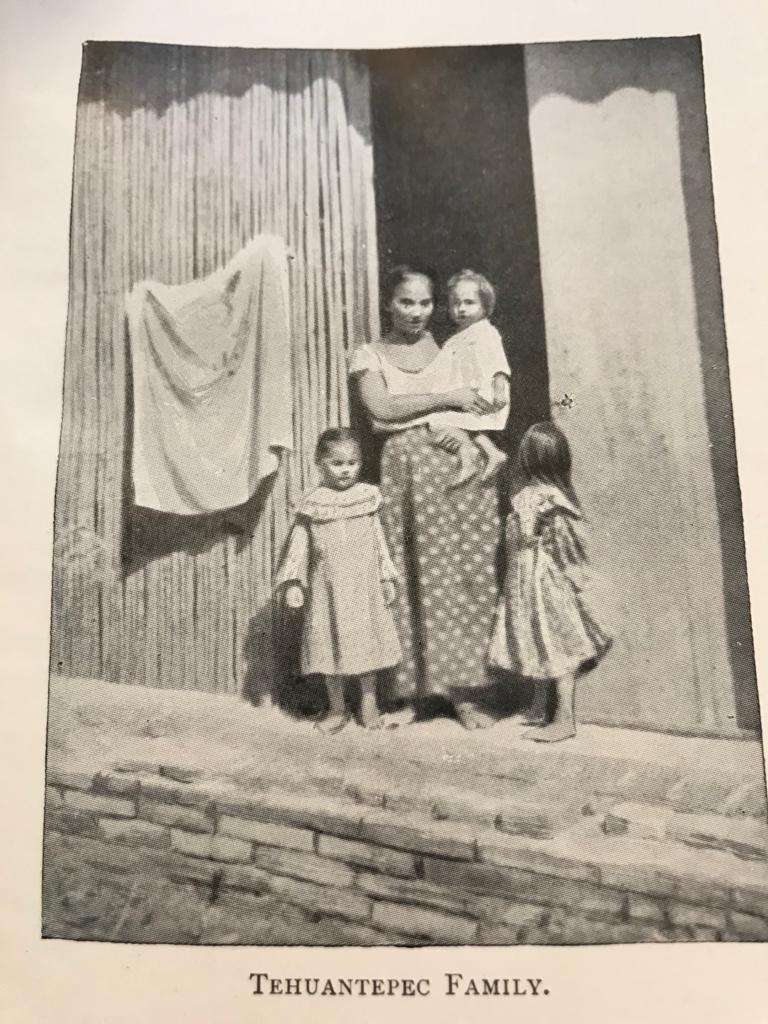COLECCIÓN DE VIAJEROS – Latinoamérica/1
La colección de libros de viajeros del Instituto Cervantes de Londres es una de las más destacadas de las bibliotecas de los Institutos Cervantes en el mundo. Esta colección representa fundamentalmente la imagen de España en la literatura de viajes de escritores extranjeros. Cubre un período de más de tres siglos de relatos sobre la historia, la sociedad y la cultura españolas desde principios del siglo XVIII hasta bien entrado el siglo XX y en estos libros se recoge la visión que se ha tenido de España desde diversos países, entre ellos Gran Bretaña, Francia, Alemania, Italia o Estados Unidos.
Además de esta colección de libros de viajeros que visitaron España, el Instituto Cervantes de Londres posee algunos libros de viajeros que visitaron algunos de los países Latinoamericanos. En las próximas entradas al blog vamos a ocuparnos de ellos.


MEXICO
Mexico as I Saw it / Alec-Tweedie, Mrs (Ethel),) (1862-1940)
Published by Thomas Nelson & Sons, [1911].-480 páginas
Este libro es un relato de dos viajes que la autora hizo a México en 1901 y 1906 y los cambios producidos en ese tiempo, con un prefacio de esta edición de 1911

This book is an account of two trips he author made to Mexico in 1901 and 1906 and the changes wrought in that time with a preface dated 1911.
La autora fue escritora de viajes, biógrafa, historiadora, periodista, editora, fotógrafa y artista, y también escribió bajo el nombre de Ethel B. Harley.
The author was a travel writer, biographer, historian, journalist, editor, photographer and artist, and also wrote under the name of Ethel B. Harley.

About the first edition / Sobre la primera edición de 1901
Begins with a moving account of the Galveston Disaster of 1900 and its aftermath, before moving on to an extensive investigation of Mexico, illustrated throughout with excellent photos. Excellently written, though language and to a certain extent attitudes (though still progressive) are naturally of another age. Large fold-out map to rear.. 8vo. 472pp
Link to the first edition / enlace a la primera edición
About the autor / Sobre la autora
http://www.kathrynshistoryblog.com/2021/01/adventure-and-tragedy-life-of-mrs-alec.html
WriteIdea Festival 2010

The WriteIdea Festival is a London’s free reading festival that takes place from 12-21 November near Tower Hamlet.
“Our City” is the theme of this year’s programme. It is focused on East London. The festival starts in style with a conversation with Tony Benn on November 12 and it includes poets, politicians, presenters, philosophers, performers as well as novelists and other writers talking about their work.
The distinguished authors that will take part in the festival are: Caroline Gilfillan, Salena Godden, Adam O’Riordan, Sarah Wise Paul Willetts, Martin Knight or Rob Young, to name a few. Signed books will be available to buy!
All events are free but will be ticketed so make sure you reserve a place.
Find the complete programme here!
Enjoy the WriteIdea Festival 2010!
Gonzalo Torrente Ballester en su centenario
 About two years ago we, at the Cervantes Institute Library, received an anonymous call offering a donation of books in Spanish.
About two years ago we, at the Cervantes Institute Library, received an anonymous call offering a donation of books in Spanish.
A mi querida amiga Elenita, a la que amo hace algún tiempo… Cuando nos conocimos a los 20 años. ¿Verdad?*
*To my darling friend Elenita, whom I have loved for quite some time … ever since we met when we were 20, true?
«Travels in Portugal… and Spain» by H. F. Link
Following his interest in botany, entomology and ornithology, Henry Frederick Link visited Spain with the Count of Hoffmannfegg, in 1798. The origin of this journey was initially to do a research focused in Portugal, as Link himself underlines in the introduction of the book “to collect materials for Fauna and Flora Lusitaniae”.
However, his exploration spread out to Spain and France and he went beyond his scientific purpose and decided to write a travel book about these three countries.
“At the time we had no idea of publishing and account of our travels as such; our chief attention was directed to investigating the works of nature, especially the botanical riches of the country”
 Nevertheless on his return, after reading numerous accounts of travels in Portugal, Link discovered so many inaccuracies that he decided to “seize the pen to defend my friends the Portugueze” and wrote Travels in Portugal and through France and Spain. With a dissertation on the literature of Portugal, and the Spanish and Portugueze Languages.
Nevertheless on his return, after reading numerous accounts of travels in Portugal, Link discovered so many inaccuracies that he decided to “seize the pen to defend my friends the Portugueze” and wrote Travels in Portugal and through France and Spain. With a dissertation on the literature of Portugal, and the Spanish and Portugueze Languages.
Written in 1801 and translated from the German by John Hincley the copy available in our library was published that year by Nichols and Son Printers, in London. The information related to Spain is gathered in six chapters of the book (VII-XI), from Biscay to Extremadura, through Castile and Madrid.
USEFUL LINKS
About the author:
http://en.wikipedia.org/wiki/Johann_Heinrich_Friedrich_Link
About the book:
(pdf – page 18)
http://dialnet.unirioja.es/servlet/fichero_articulo?codigo=2857118&orden=0
Online book:
“Tourist in Spain» (1837) by Thomas Roscoe
 Thomas Roscoe (Liverpool, 1791) was a British journalist and travel-writer. The account of his journeys was published by Mr. Jennings within the collection Landscape Annual. Although Mr. Roscoe wrote four volumes on Spain –which can be found in our library–, Tourist in Spain: Biscay and the Castile’s is his most representative piece of travel writing. He also wrote works on France, Italy and Morocco and The Life and Writings of Miguel de Cervantes Saavedra.
Thomas Roscoe (Liverpool, 1791) was a British journalist and travel-writer. The account of his journeys was published by Mr. Jennings within the collection Landscape Annual. Although Mr. Roscoe wrote four volumes on Spain –which can be found in our library–, Tourist in Spain: Biscay and the Castile’s is his most representative piece of travel writing. He also wrote works on France, Italy and Morocco and The Life and Writings of Miguel de Cervantes Saavedra.
In Tourist in Spain (1837) the author relates the events that took place throughout his travels around Spain, starting in the autumn of 1935. Bayonne is the starting point of the peninsular tour, through the Pyrenees, visiting then Vitoria, Burgos, Segovia, Madrid and ending in Toledo. Within the first half of the volume, Mr. Roscoe stresses the events related to the conflict that is taking place during that period, the First Carlist War, and its “barbarous excesses committed on both sides throughout this lamentable war”.
Besides Roscoe’s personal adventures, the author relates stories from other people that he met during his journey. With regard to the Spaniards, the journalist states that “they do not govern themselves here by the laws of ethics, but by custom, or according to the rules they can suck out of the pith of old proverbs, mostly antediluvian, and just suited to the world as it existed before the flood”.
 The engravings by David Roberts that illustrate the book are one of the most remarkable features of this volume. According to Spectator, “The engravings are so uniformly excellent, that we cannot, without doing injustice to the other, name any one in particular. They are, for the most part, perfect”.
The engravings by David Roberts that illustrate the book are one of the most remarkable features of this volume. According to Spectator, “The engravings are so uniformly excellent, that we cannot, without doing injustice to the other, name any one in particular. They are, for the most part, perfect”.
USEFUL LINKS
About the author:
http://www.hanesybont.co.uk/earlytourists/roscoe.htm
Online book:
Other works on Spain by Roscoe:
“Spain and its People” by Eugène Poitou
First published in France in 1869, Spain and its People. A record of Recent Travel with historical and topographical notes, was translated by William Henry Davenport Adams, an English writer and journalist (whose biography is available in Wikipedia) in 1872.
The copy accessible in our library contains numerous engravings by V. Foulquier portraying scenes of the everyday life in Spain, its landscapes, traditions and main episodes of its History.
As Davenport points out in the preface,
if Poitou´s pages pretend to no great depth of reflection, they sketch the present condition of Spain, – they delineate its landscapes, they cull the choicest episodes of its history, and touch upon the more conspicuous features of the Spanish character,- with unfailing good sense, quick discrimination, and considerable facility.
Spanish people and their manners are the object of a lot of criticism made by Poitou through this book, staying such things as “They have no taste” or “Spain, nevertheless, is very good! But, I must own, the Spaniards have somewhat spoiled it; and thanks to them, I return more persuaded that ever of the truth of the adage, that we always learn something by travelling, if it be only to love better our own country”.
Starting from the northern cities bordering on France and heading southwards, the author takes particular interest in describing the Cathedral of Toledo, Museo del Prado in Madrid or Zaragoza, which the author believes to be “the most interesting city of Spain”. At the beginning of every chapter a poem of renowned author is included, verses by Byron, Southey and Jorge Manrique, among others.
USEFUL LINKS
About the author:
http://www.fernandoiwasaki.com/articulos_archivos/Poitou.pdf
About the book:
Online book:
Sir John Carr’s travels in Spain in 1809
 Sir John Carr (1772–1832) was a travel writer born in London on 6 December 1772. A short biography is available at the Oxford Dictionary of National Biography
Sir John Carr (1772–1832) was a travel writer born in London on 6 December 1772. A short biography is available at the Oxford Dictionary of National Biography
Our copy of Descriptive travels in the southern and eastern parts of Spain and the Balearic Isles in the year 1809 was published in London in 1811.
Descriptive travels … includes some interesting engravings of the city of Granada (frontispiece), Cádiz from the sea (pp. 112-113), Valencia from the river Segura (pp. 254-255), Ermita de Santa Anna in Montserrat (pp. 316-317), La Granja d’Esporles (pp. 356-357) and Port de Maó (pp. 368-369)

Appendix III contains a table with details about the different coins used in Spain, the “Spanish Money” (maravedíes, reales, sols y diners) and its exchange rates.
Sir John Carr visited Spain during the Peninsular War, providing the book with important episodes.
The last chapter is entirely dedicated to the island of Menorca which had been under British sovereignty during the last hundred years (with the exception of the brief period of French occupation).
Carr arrives in Cádiz and travels around Andalusia. There are references to the Central Commission and to the Second Siege of Saragossa. After visiting Granada, Carr travels to Murcia, Valencia and Cataluña, and finally ends his journey in Palma.
Amongst the contents dealt with in the book, we can find odd references such as “Waiters, Spanish, How called”, “Women, Spanish, their devotional coquetry”, or “Galejos, or porters from Galicia, their honesty”, etc.
Although Sir John Carr met Lord Byron in Cádiz, there are no references in this index about this meeting.
USEFUL LINKS
About the Author (in Spanish):
http://www.dipalme.org/Servicios/Anexos/anexosiea.nsf/VAnexos/IEA-LVA09/$File/LVA09.pdf (pages 6 to 7)
About the book:
Cristina Torres-Fontes Suárez. Viajes de extranjeros por el reino de Murcia. T. 1
Asamblea Regional Real Academia Alfonso X el Sabio
1996 ISBN84-88996-05-5
http://www.cervantesvirtual.com/servlet/SirveObras/01604529214583901890035/023652_0038.pdf
There is an extract in Spanish about the «Reino de Murcia»
http://www.cervantesvirtual.com/servlet/SirveObras/04700624244616662232268/023653_0054.pdf







